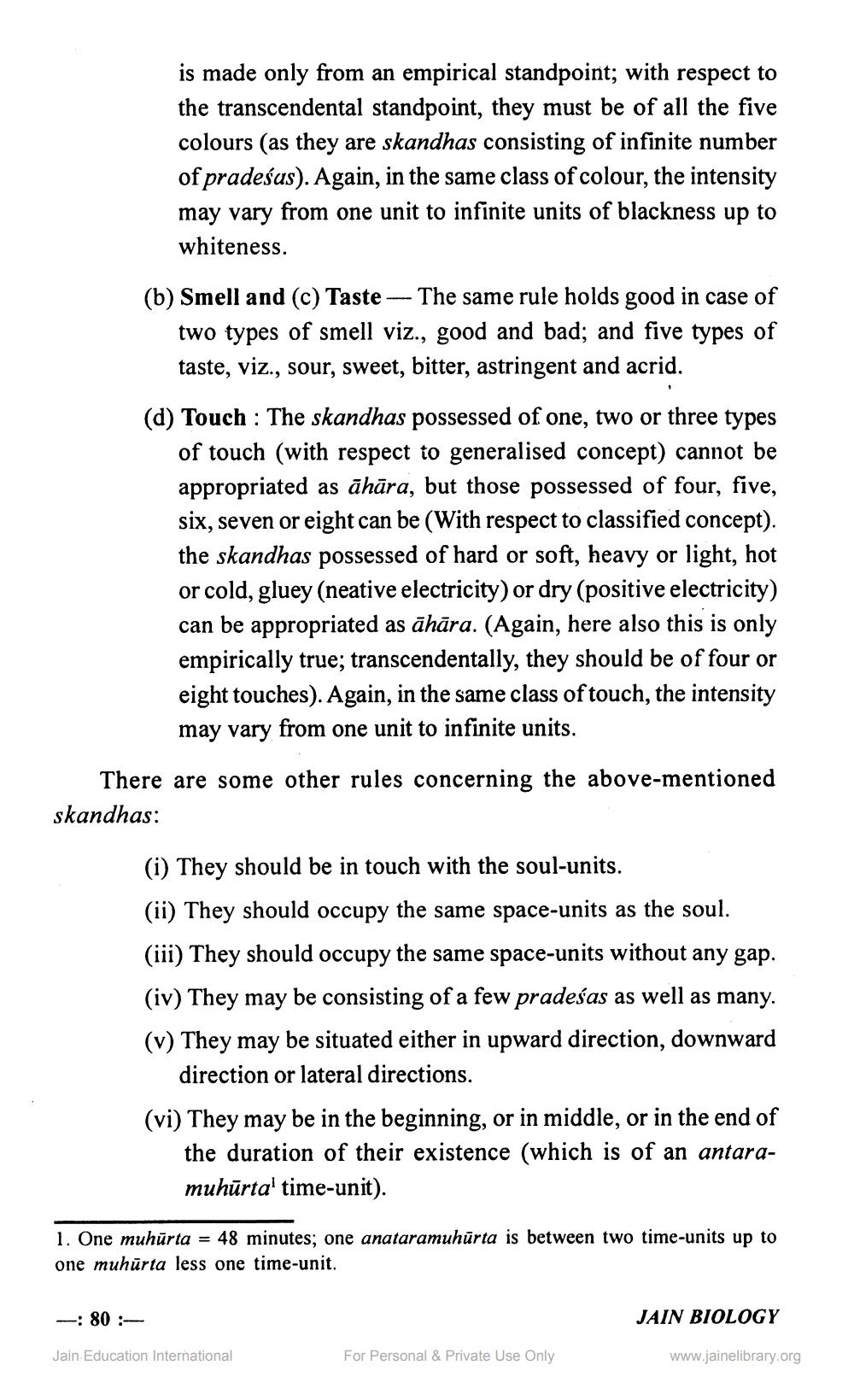________________
is made only from an empirical standpoint; with respect to the transcendental standpoint, they must be of all the five colours (as they are skandhas consisting of infinite number of pradeśus). Again, in the same class of colour, the intensity may vary from one unit to infinite units of blackness up to
whiteness. (b) Smell and (c) Taste --- The same rule holds good in case of
two types of smell viz., good and bad; and five types of taste, viz., sour, sweet, bitter, astringent and acrid.
(d) Touch : The skandhas possessed of one, two or three types
of touch (with respect to generalised concept) cannot be appropriated as āhāra, but those possessed of four, five, six, seven or eight can be (With respect to classified concept). the skandhas possessed of hard or soft, heavy or light, hot or cold, gluey (neative electricity) or dry (positive electricity) can be appropriated as āhāra. (Again, here also this is only empirically true; transcendentally, they should be of four or eight touches). Again, in the same class of touch, the intensity
may vary from one unit to infinite units. There are some other rules concerning the above-mentioned skandhas:
(i) They should be in touch with the soul-units. (ii) They should occupy the same space-units as the soul. (iii) They should occupy the same space-units without any gap. (iv) They may be consisting of a few pradeśas as well as many. (v) They may be situated either in upward direction, downward
direction or lateral directions. (vi) They may be in the beginning, or in middle, or in the end of
the duration of their existence (which is of an antaramuhūrtal time-unit).
1. One muhurta = 48 minutes, one anataramuhūrta is between two time-units up to one muhurta less one time-unit.
-: 80 :
JAIN BIOLOGY
Jain Education International
For Personal & Private Use Only
www.jainelibrary.org




